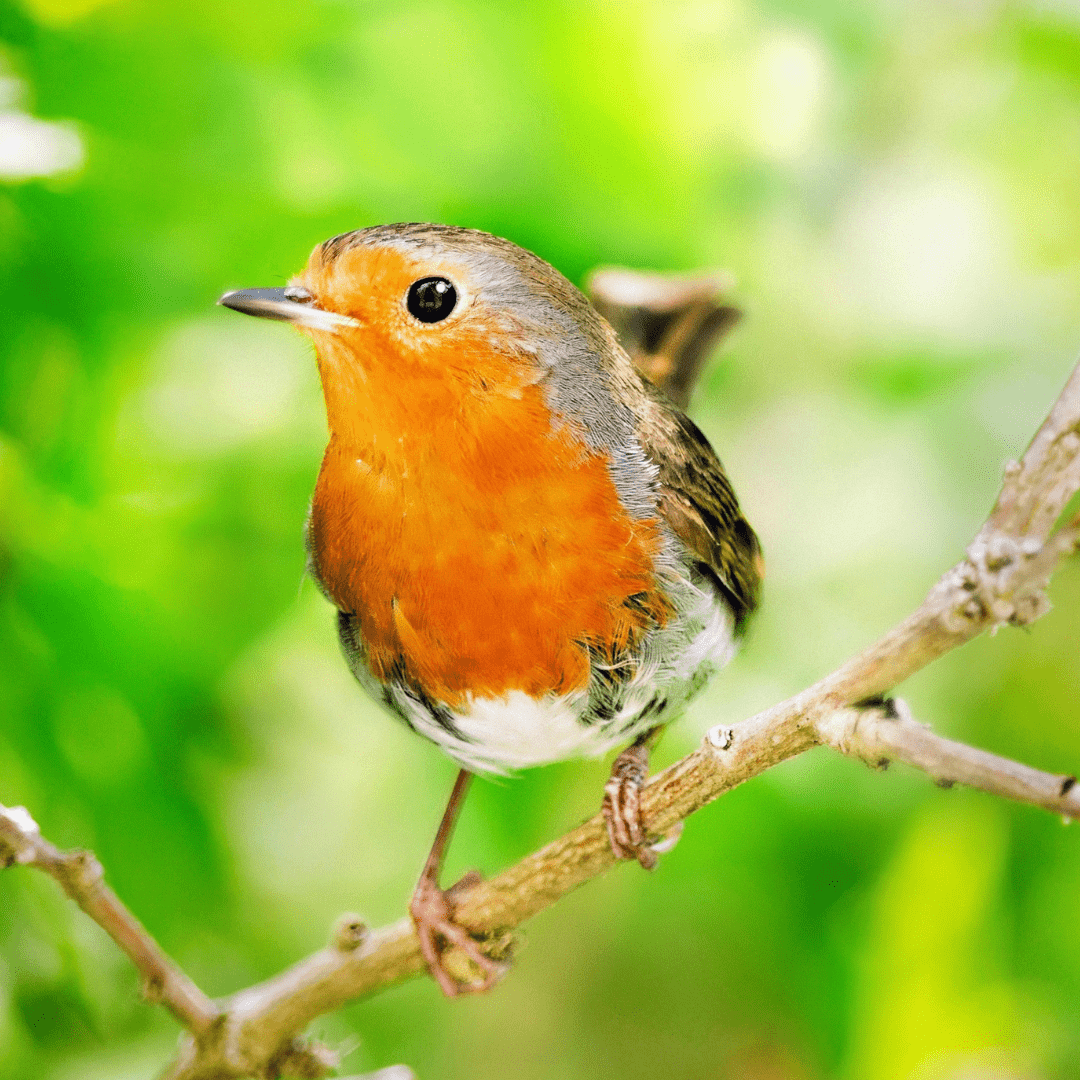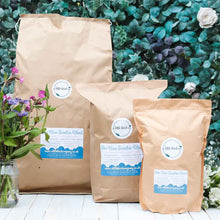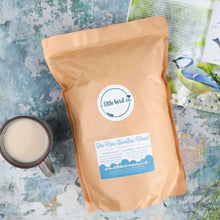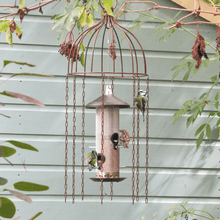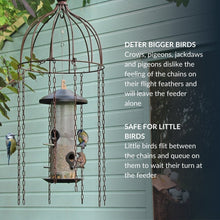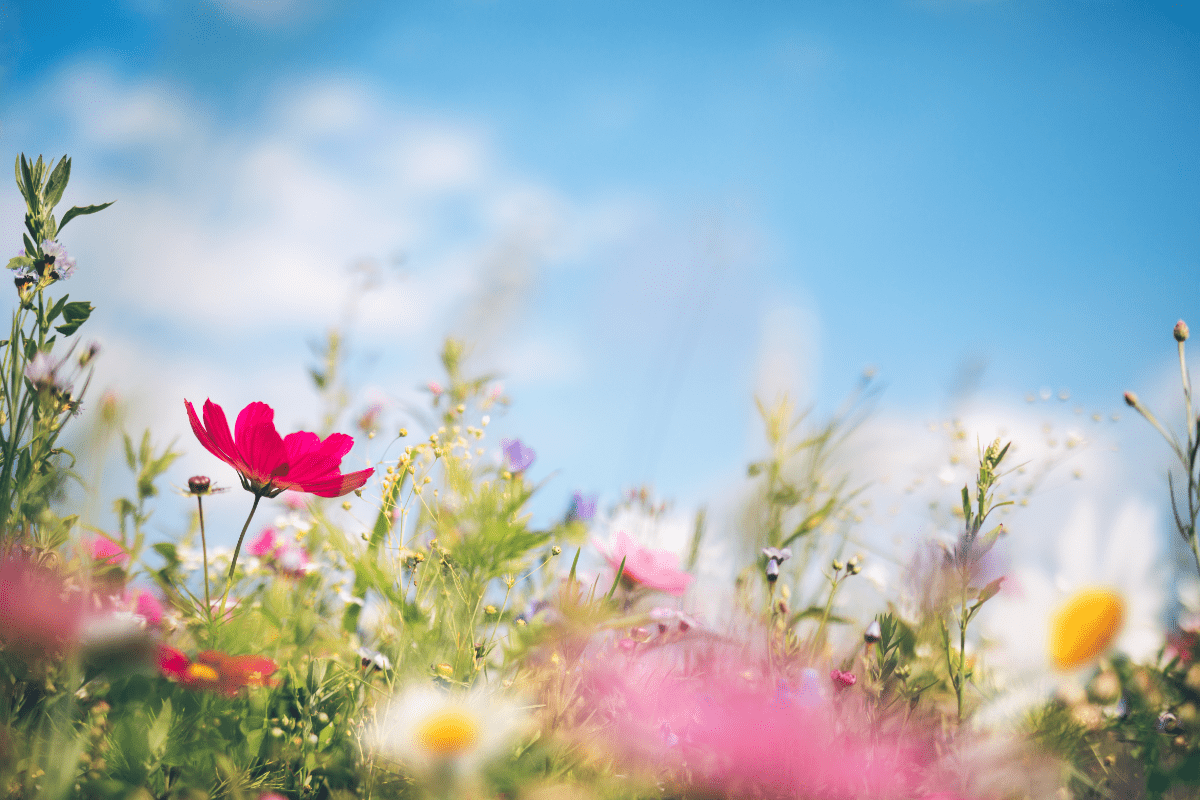Exploring the links between nature, mental health and wellbeing

Feeding the birds and spending time in nature has huge benefits for our mental wellbeing, giving us a sense of purpose and a connection with the world around us. According to a study carried out by the Natural History Museum, the UK has seen the loss of 73 million birds including house sparrows, starlings and blackbirds. When we put out bird food, we improve the chances of survival for our feathered friends as well as our own mental health.
Do you feel blue on a grey day when you're kept inside? I know I do, but I also know that putting out food and watching the birds is one of the ways I can overcome those feelings, and the research backs this up. Feeding and watching urban garden birds has been found to increase overall psychological well being and make people feel more relaxed and connected to nature.
Research published in the British Journal of Sports Medicine (2019) found that spending time in nature, including birdwatching, is associated with lower levels of depression and anxiety. The study showed that individuals who engaged in regular nature-based activities reported better mental health compared to those who did not. A study conducted by the University of Exeter (2017) revealed that people who live in neighbourhoods with more birds and higher levels of bird biodiversity experienced lower levels of stress, anxiety, and depression. The researchers found that the presence of birds in the neighbourhood had a positive impact on the mental health of residents.
Birdwatching offers opportunities for mindfulness and stress reduction. Observing birds in their natural environment can help individuals become more present and focused, promoting relaxation and a sense of connectedness with nature. If the standard meditation techniques don’t work for you, try bird watching as a way to take a mindful moment for yourself.
Spending time observing the birds keeps us in the moment and gives us an appreciation for the wildlife around us – we can observe the subtle seasonal changes that we might otherwise have missed, and the birds in our gardens can be very entertaining. Venturing out of the house to a local birdwatching spot gives us access to even more beautiful and diverse species, giving way to a new hobby.
There are nationwide surveys which you can join in with too, giving your bird watching purpose and contributing to the greater good of the species. In a world in which more and more changes, the constant, perpetual rhythm of observing and supporting the nature local to you can be grounding and nurturing.
And you can go even further - there is a whole world of birdwatching and wildlife photography for you to explore if that’s what you choose, and wildlife conservation and bird ringing are brilliant ways to make a huge difference through volunteer work.
The UK charity Mind devised the term “ecotherapy” to describe the improvements to mental health that come from spending time in a green environment – read more about the links they have found between time in nature and mental health here, and devised a treatment focussing on time spent in a green environment.
You can follow the tips below to start bird watching in your back garden, or why not take a daily walk in a more rural setting. Make sure that the walk is a manageable distance and aim to follow the same route each day so that you can observe the seasonal changes and start to build up an understanding of the species that use the area. This is an excellent idea for young children too – they value the routine of a regular, familiar walk in nature and the extra pair of eyes will come in handy.
Read on for tips on how to get started on your daily ten minute bird watch:
Five Steps to Garden Bird Watching for the Beginners
1. The first thing to do is to give your birds a reason to come to your garden. Set up one or two feeders with a regular supply of bird food (subscribe today to our bird seasonal, top quality bird food). Within a few weeks you should find that local birds come to investigate the new supply – just make sure that you keep the feeders clean and regularly topped up. As a long term plan, try adding some plants and features to your garden to encourage more biodiversity – a range of shrubs and flowers which provide food and habitats for the birds and encourage insects to your garden will increase the number of birds for you to see. A wildlife pond is an excellent addition, and a bird bath will be welcome too.
2. Next, find a comfortable spot to watch from. A sofa or chair with a view of the garden is ideal – you might find that you can see more from an upstairs window. If you’re in a draft, grab a blanket, and make sure the seat is as welcoming as possible so it’s a treat to sit and watch the birds. In the summer you might want to make your bird watching station outside – maybe try eating breakfast or lunch in the garden.
3. Keep your bird books and a notepad to hand – you won’t recognise every bird you see straight away, but it won’t take long for your to spot your favourites and recognise species by their behaviour or their song. You can join the BTO Garden BirdWatch scheme and contribute to the data they collect – visit them at https://www.bto.org/our-science/projects/gbw. You can photograph, video or sketch the birds you see or note them down in a book – you can record their birdsong too – www.british-birdsongs.uk/alphabetical/ is a great resource to help you identify species by their song. If you have your phone or iPad with you, try putting it on aeroplane mode for your allocated ten minutes so that you aren’t distracted. There are lots of beautiful books to choose from - if you're technically minded, the RSPB's Pocket Guide has the facts and figures to keep you busy. I always recommend I Like Birds for the beautiful pictures and detailed descriptions - it's a brilliant coffee table reference book. Matt Sewell's Spotting and Jotting Guide is a great option to tuck into your pocket on a walk.
4. Take ten minutes every day to sit and watch the birds – you can spend a little of that time jotting, photographing, note taking and sketching, but aim to just sit and observe for the majority of the ten minutes. Which birds do you enjoy watching the most? What are their favourite foods? Do your favourite birds seem to have a pecking order within their species – do they squabble amongst themselves, or do they seem to get along fairly well? Can you spot any nesting birds? Do they go straight to their nests with food or supplies, or do they have elaborate routes and behaviours to discourage predators? Can you spot any baby birds in springtime, or any mating rituals? Which birds appear to be bolder and which are more shy and skittish? Are there any predatory birds or other predators in your garden? If the birds all disappear suddenly during a feeding session, what causes this to happen - are predators flying over head? Which feeding stations are the most popular? Can you spot any ground feeding birds? Which areas of your garden are the most popular for the birds? Where do birds shelter if they feel scared?
How do you feel while you watch the birds? Does time spent in or watching nature affect your mood or sense of well-being? Immerse yourself in just quietly watching and do your best to stay in the moment. If you have questions or want to look something up, try to wait until the end of the ten minutes if you can – just make a note to come back to it.
5. If you feel motivated, record your findings after the ten minutes are up – jot down a quick list of the birds you have seen, look up any you didn’t recognise and sketch any you can’t find in your books.
Whether you are already an accomplished birder, or if you have just a passing interest in birds, try to give yourself uninterrupted time every day to spend just watching the beautiful and diverse range of wildlife in your urban garden. Share what you see in the comments – which are your favourite birds? Does watching the birds enhance your well-being?
Ready to deepen your connection with the birds in your garden? Discover more about your feathered friends and how to attract them to your space with Amidst the Birdsong: A Garden Birdwatcher's Journal. This beautifully crafted journal is the perfect companion for anyone looking to observe and learn about the birds visiting their garden. Start your birdwatching journey today – click here to learn more.




